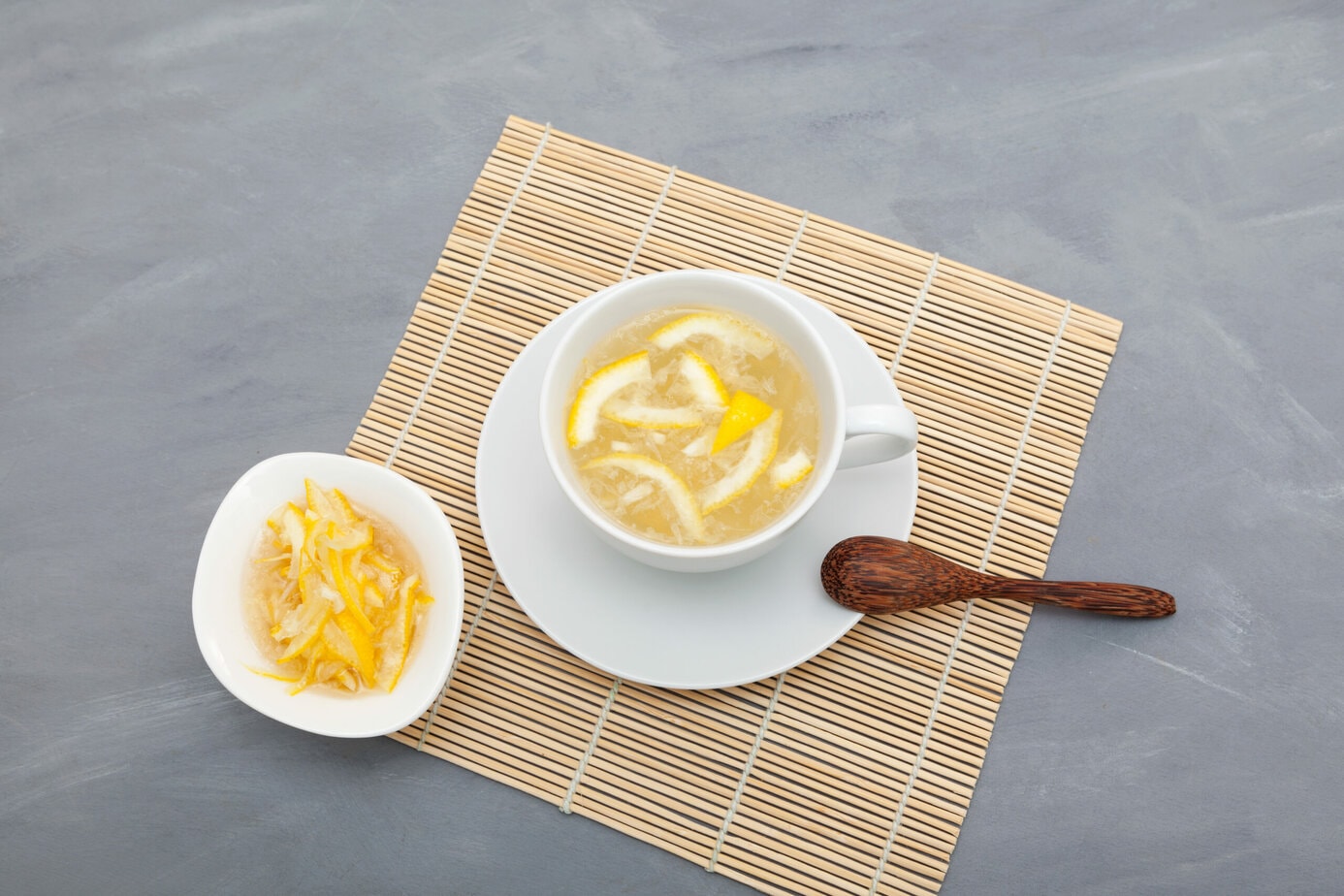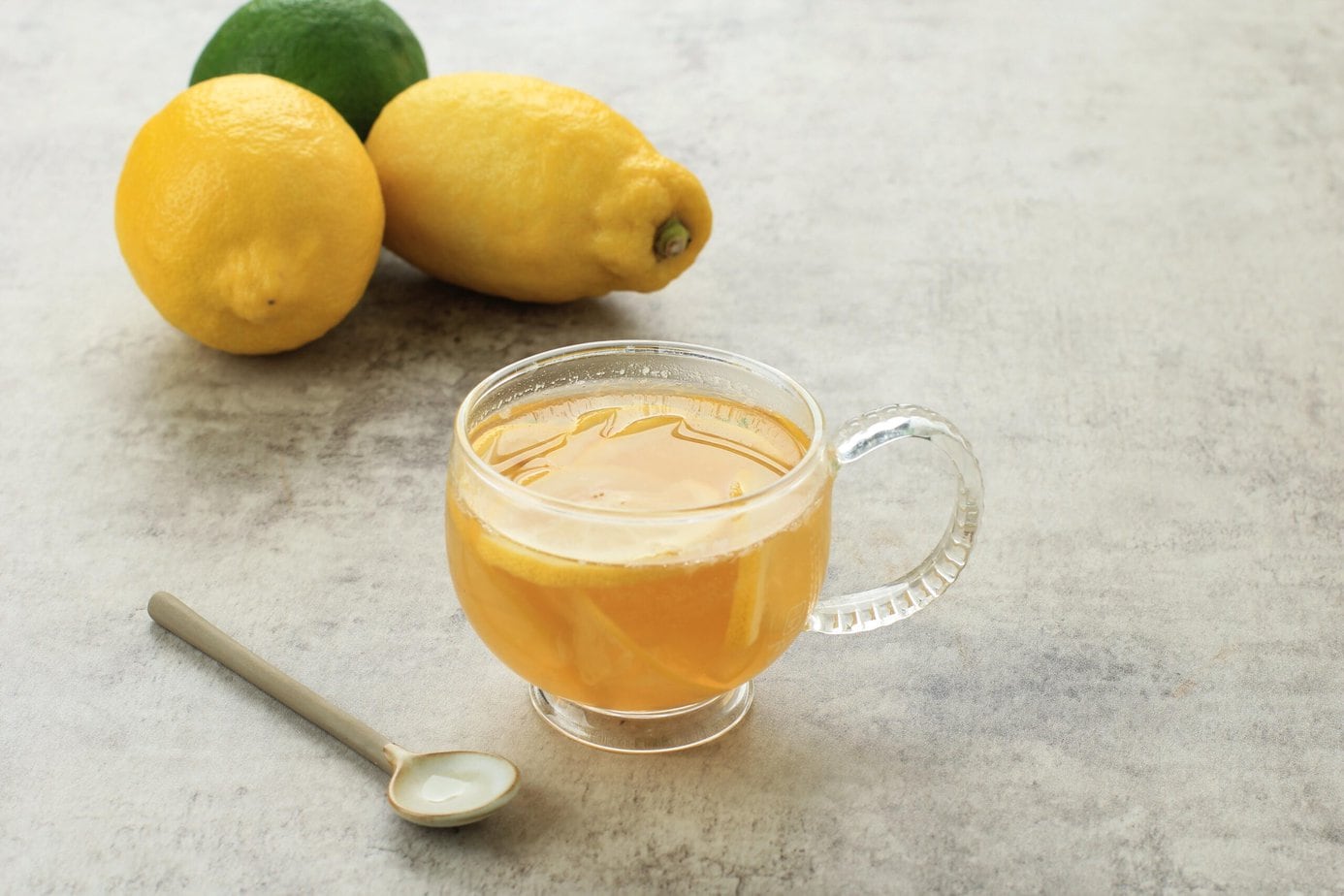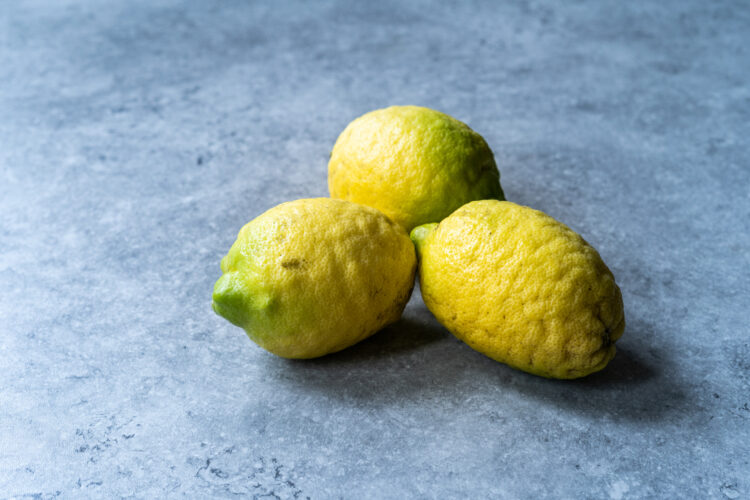It has a lemon’s color, shape, and texture—they could almost pass for twins. Yet while yuja belongs to the citrus family, it’s not the same as the common yellow lemon we all know. So what exactly is yuja?
What is Yuja?
Halfway between a mandarin and a lemon, yuja—called yuzu in some regions—is a citrus fruit that hails from China. Like most citrus, it has a bumpy, fairly irregular rind. Its color varies with variety and ripeness.
It’s harvested mainly for its zest and juice, but it’s useful in plenty of other ways. There are many yuja-based preparations—tea among them!
Origin of Yuja
It’s the sort of citrus that’s hard to find around here. Originally a natural hybrid between mandarin and Ichang papeda (Chinese lemon), it was cultivated in Tibet and China, particularly in the Himalayan foothills.
Later, yuja became very popular in Japanese cuisine and even came to be called “yuzu.” Little by little, it spread to neighboring regions before gaining popularity across Asia. It wouldn’t appear in Europe and the United States until the 20th century.
Unlike most citrus, this hardy fruit grows on dense, thorn-covered trees, which makes harvesting tricky—and helps explain its price in stores. It’s considered rare, even a luxury ingredient.
Varieties of Yuja
There are a few varieties of yuja, but most are hard to source due to the fruit’s rarity. Hana Yuzu, for example, is prized mainly for its highly fragrant blossoms.
In Japan, you’ll also hear about Yuko (extremely rare and found only there), Tadanishiki Yuzu, and Shishi Yuzu—sometimes called “Lion Yuzu.”
Many of these exotic citrus look alike. It’s also common to confuse yuja with dangyuja, a Korean pomelo. Even though it looks and tastes similar to yuja, dangyuja is genetically considered a pomelo variety. So don’t hesitate to ask for guidance in-store before checking out if you have the chance to buy some.
Production
Yuja was once grown exclusively in China. Over the centuries, however, the fruit—though rare—has spread around the globe, expanding its growing regions.
Japan, which helped popularize it, remains the leading producer. Kochi Prefecture, for example, in the south of Shikoku Island, has the most yuzu fields in Japan. The region is especially known for the quality of its fruit.
In Europe, producers are few and far between. Crops are mainly in Spain and Portugal. In the United States, yuja fares best in California’s mild, temperate climate.
Taste of Yuja
Yuja tastes sweet and fruity, with lemony notes and a relatively crisp texture. For a clearer idea, its flavor sits between the sweetness of mandarin and the acidity of lemon. It’s still fairly tart, which is why cooks typically use only the juice or peel, rather than serving it in wedges like an orange.
Beyond flavor, yuja is prized for its fragrance. It adds a delicate floral note to dishes.
Its aroma is quite powerful, so it pairs beautifully with delicate foods like seafood and fish. It’s also widely used in pastry and desserts. Interestingly, more and more perfumers are using it in their creations.
The benefits of Yuja
Yuja is very rich in vitamin C, making it an excellent natural antioxidant to help support the immune system. It also contains compounds such as flavonoids and amino acids that may help protect against heart disease and reduce the risk of certain types of cancer.
Yuja is also an excellent source of fiber, which can help regulate digestion. In addition, its high pectin content may help lower blood cholesterol levels. In short, it’s nutrient-dense and mineral-rich—bringing a touch of the exotic to the plate along with potential health benefits.
How to use Yuja?
There are many ways to use yuja. In Japanese cuisine, it’s often infused into liqueurs or turned into marmalade and jam. Use it in composed salads, vegetable dishes, and marinades—either as a condiment or as a standalone ingredient.

Naturally, yuja shines in a range of desserts, such as fruit salads, cakes, crumbles, sorbets… You can make juices, “yuzunades” (a riff on lemonade!), cocktails, and of course tea.

Yujacha, a Korean tea made with yuja (as the name suggests), greatly helped popularize the fruit. It’s made from slices of yuja macerated in sugar and a little vinegar, then steeped in hot water for a fruity, tangy tea.
Yuja tea is often enjoyed hot in winter to warm up, and iced in summer to cool down. Beyond flavor, it’s also considered a traditional remedy in Korea to help support the immune system and soothe sore throats. As for me, I drink it simply for pleasure—forget the medicinal virtues—paired with some good homemade authentic American cookies
Where to find Yuja tea?
Look for yuja tea in Asian grocery stores, or order it online—many sites carry all sorts of exotic products.
You can also make yuja tea yourself by buying the necessary ingredients from a specialty grocery store. The challenge is finding fresh yuja. Aim for autumn—between September and November—to track some down. Be sure to check the quality and freshness of the ingredients before buying.
How to store Yuja tea?
Fresh yuja tea will keep in the refrigerator for about a week in an airtight container. Store it away from light and heat to maintain freshness and flavor.
Note that the taste and color of the tea may change over time due to the natural breakdown of the ingredients, so it’s best enjoyed promptly. You can also freeze yuja tea.
Pour it into ice cube trays and freeze. Another long-term option: buy yuja tea loose.

Ingredients
Ingredients for yuja-cheong (Yuja Marmalade)
- 240 g yuja (yuzu) yuja
- 240 g granulated sugar
Ingredients for Yuja Tea (Yuzu Tea)
- 3 teaspoons yuja-cheong
- 1 cup of water hot or cold
Instructions
For the Yuja-cheong
- Sterilize a glass jar in a pot of boiling water.
- Rinse the fresh yuja under running water. Use baking soda and/or coarse salt to scrub the skin. Pat dry with paper towels.
- Separate the yuja into peel, pulp, white pith, seeds, and juice. Discard the seeds and white pith. Thinly slice the peel into even strips.
- Blend the pulp and juice (not the peel) in a blender.
- In a clean bowl, combine the blended yuja with the sugar and mix well. Place the sliced peel in the sterilized jar, then pour in the yuja–sugar mixture. Stir with a clean teaspoon.
- Seal the jar and leave at room temperature until the sugar dissolves. Depending on the volume, this can take a few days. Meanwhile, stir the yuja-cheong once a day with a clean teaspoon.
- Refrigerate until finished. The marmalade’s flavor will improve over time.
For Yuja Tea (Yuzu Tea)
- Stir 2–3 teaspoons yuja-cheong (yuja marmalade) into a cup of water until dissolved. Serve. (You can eat the yuja peel, if you like.)

